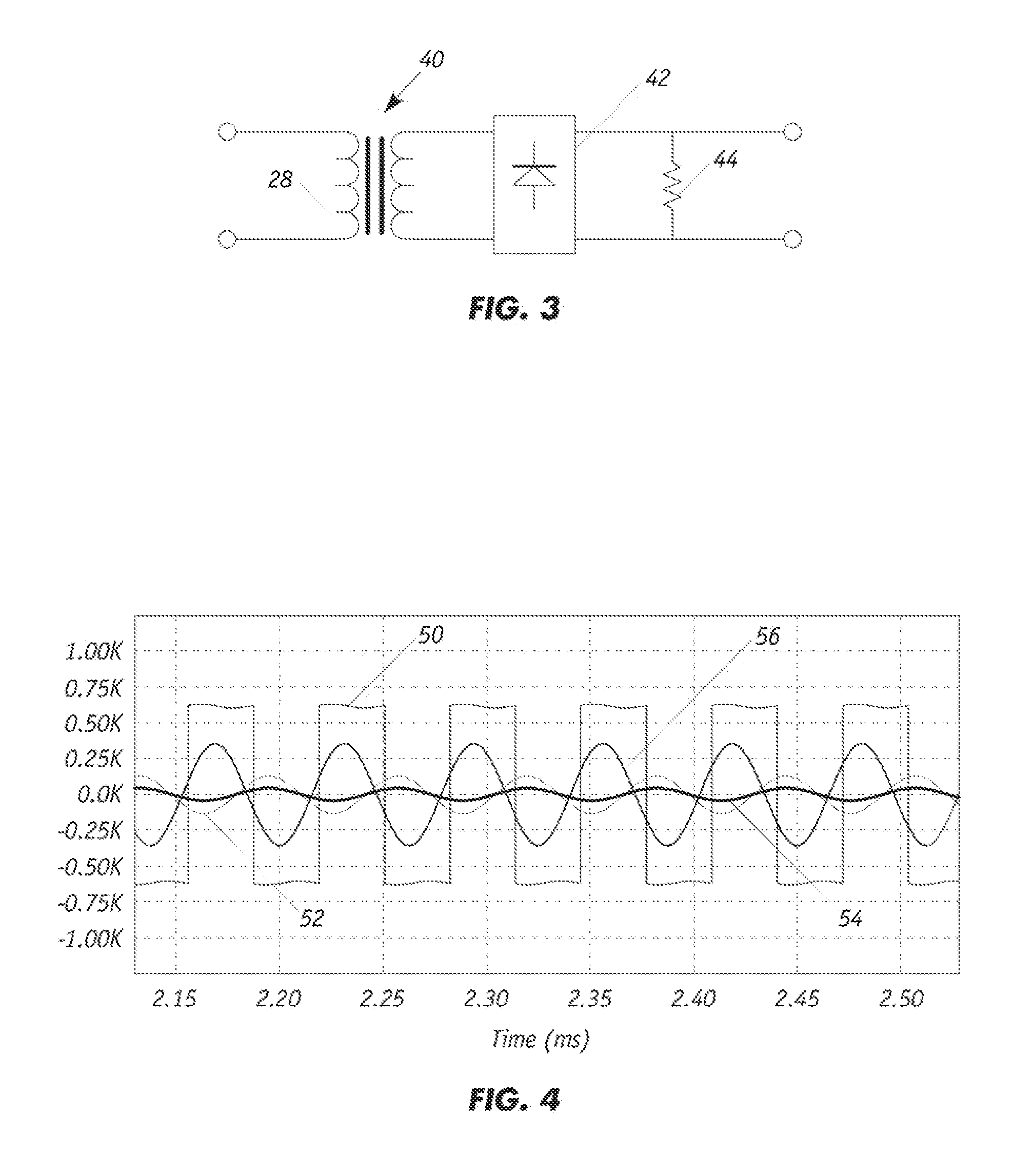Series-Parallel Resonant Inverters
a series-parallel network and inverter technology, applied in the field of series-parallel resonant inverters, can solve the problem of complex calculation of the resonance frequency of the entire series-parallel network, and achieve the effect of high input voltage operation
- Summary
- Abstract
- Description
- Claims
- Application Information
AI Technical Summary
Benefits of technology
Problems solved by technology
Method used
Image
Examples
Embodiment Construction
[0024]FIG. 1 illustrates a typical AC-DC converter 10 with rectification and filtering from which a stable DC source can be developed from a conventional 3-phase power source. An alternating voltage current undergoes electromagnetic interference and electromagnetic coupling filtering 12. The signal is next rectified by a diode rectifier 14. A final set of inductors 16 and capacitors 18, 20 filters out any remaining AC signal to generate an essentially pure DC output. This is possible as the impedance of a capacitor is Z(w)=1 / (jwC) and the impedance of an inductor is Z(w)=jwL. Here, Z(ω) is the impedance as a function of the natural frequency, C is the capacitance, L is the inductance, j is an imaginary value and ω is the natural frequency, a high value near infinity in the ideal case for an AC signal.
[0025]As such, the ideal embodiment yields infinite impedance for an inductor and zero impedance for a capacitor. Therefore, an AC signal cannot pass through an inductor but can pass th...
PUM
 Login to View More
Login to View More Abstract
Description
Claims
Application Information
 Login to View More
Login to View More - R&D
- Intellectual Property
- Life Sciences
- Materials
- Tech Scout
- Unparalleled Data Quality
- Higher Quality Content
- 60% Fewer Hallucinations
Browse by: Latest US Patents, China's latest patents, Technical Efficacy Thesaurus, Application Domain, Technology Topic, Popular Technical Reports.
© 2025 PatSnap. All rights reserved.Legal|Privacy policy|Modern Slavery Act Transparency Statement|Sitemap|About US| Contact US: help@patsnap.com



